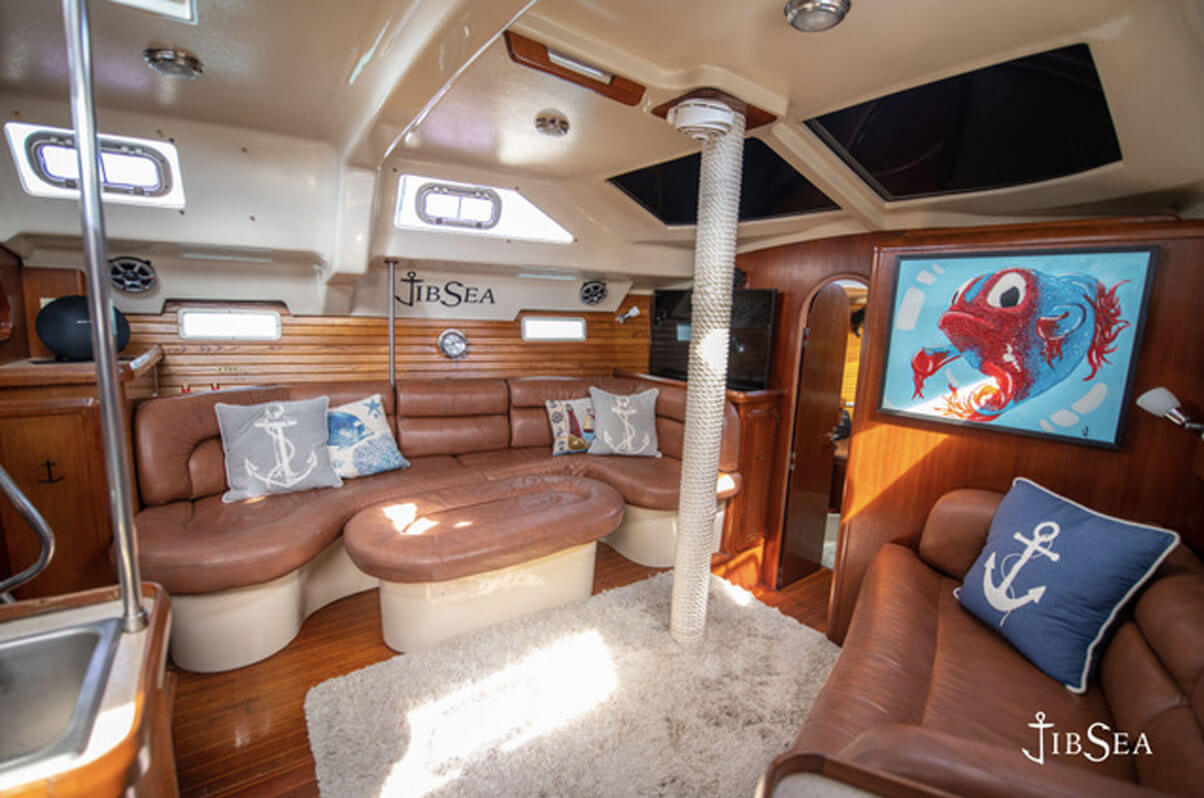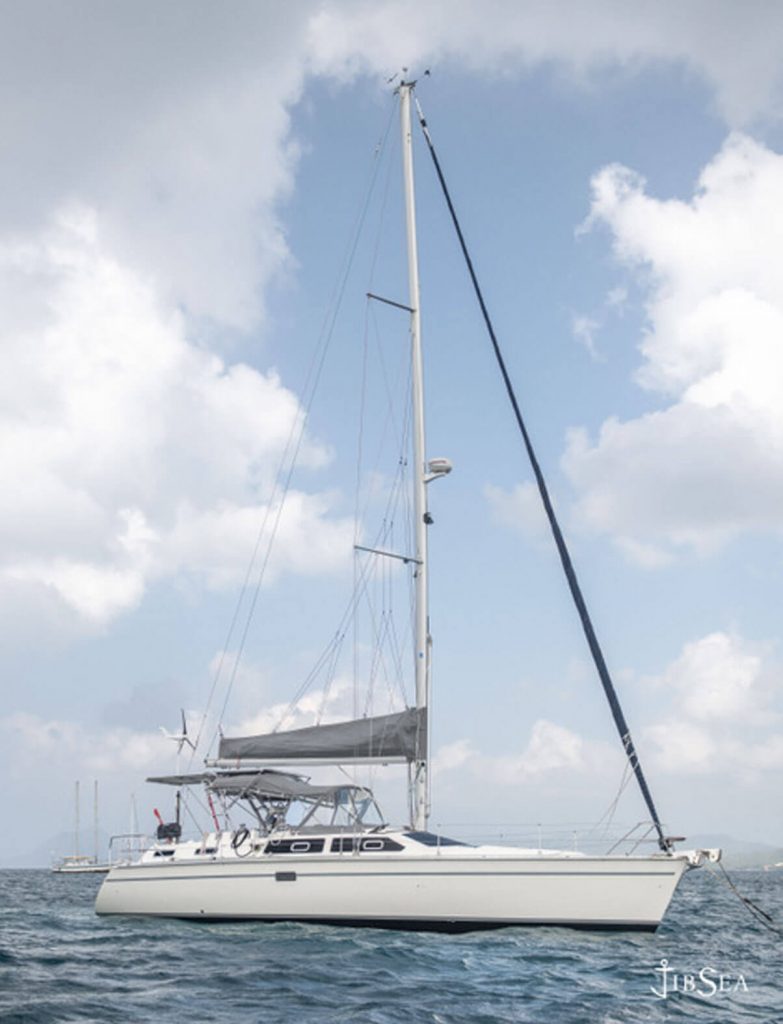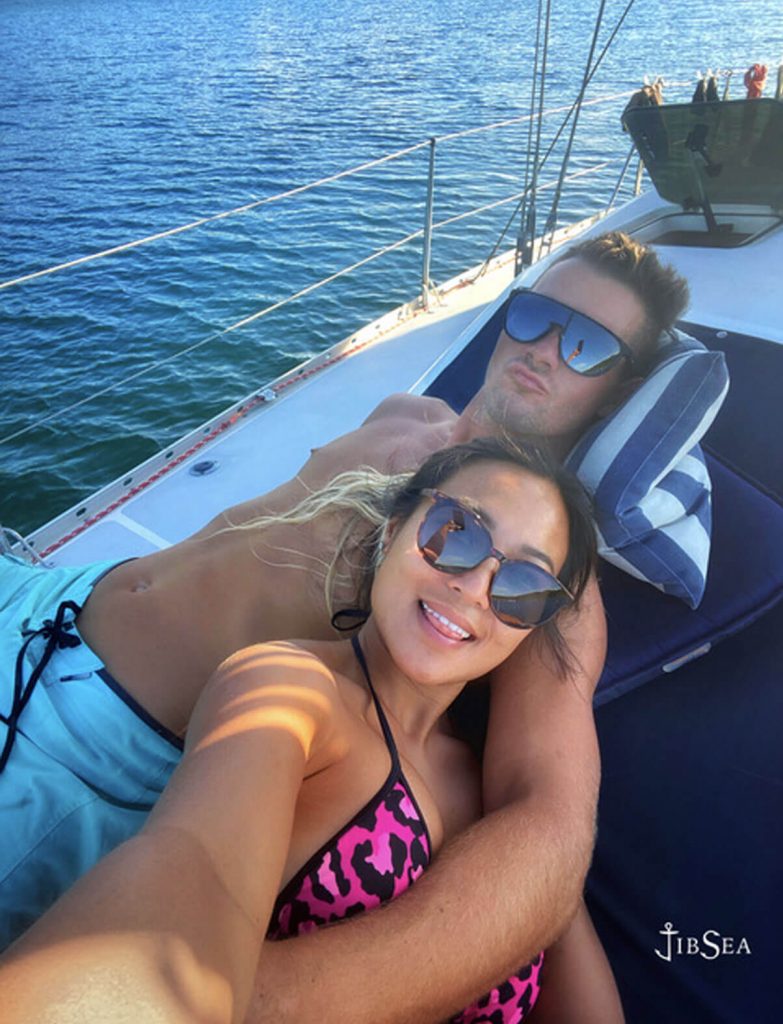
One thousand, one hundred and sixty-seven days. That’s how many days Travis and I have been living on our sailboat at the time of writing. One of the most common questions we’re asked is how we manage to live together in such tiny quarters without driving each other completely nuts! Not only do we live in the small confines of Jibsea, our 42’ monohull, we’re together nearly 24 hours of the day, seven days per week. Prior to casting off from the dock as full time cruisers, we spent just under a year as full-time liveaboards in a in Toronto while we stashing away every penny we could into our piggy banks, saving up for our dream.
BABY STEPS
We have lived separately, like how the vast majority of couples start out, and gradually transitioned into being attached at the hip. After living separately, we lived in a condo together where we each had our own time commuting to and from work, again, like many couples do. From there, we moved onto our sailboat. When people ask us about living space on a sailboat, we often put it this way; it’s like living in a condo, but taking away all of the unused space. We have our sleeping quarters, bathroom, kitchen etc. but nothing really ‘extra’. When we transitioned into full-time liveaboards at the marina, we still each had our own personal vehicles and time spent apart during regular work hours. During the pandemic, I worked from home (our sailboat), while Travis continued working off the boat. It was a gradual way to both reduce our living space while increasing the time spent together.

HAVING OUR OWN SPACE…KIND OF.
We’re one hundred percent a partnership and share everything, but overtime, have developed certain spaces that are “more Travis’ or more Steph’s”. We each have our own designated areas for clothing, knick knacks or things that the other won’t ever use or need to use. For example, Travis has his “work station” in our engine room and I have what Travis calls my “beauty station” in our aft-cabin. Then there are also areas where we store things that we both use and are categorized (spare boat parts, electronic accessories, snack drawer etc.) If you’re interested in a full tour of our floating home, we have a boat tour over on our YouTube Channel. You would think that while living in a small space, you can’t really lose things but if you know boats, then you know that things get stored wherever there’s space and locating any particular item could mean a whole lot of rummaging. This leads me to another important point…
ORGANIZATION
Both of us know where everything is stored, despite whether a his, hers, or ours thing. Fortunately, we’re both pretty organized people who never had the tendency to lose or misplace belongings in general, so it came easier for us. What can be a challenge though, is at times, items may need to be stored wherever space will allow, versus where it might make more sense to be stored. If you’re not an organized person to begin with, you may learn to be quickly while out there cruising. We’ve been in mid-passage when equipment or parts have failed and needed repair or replacement in a timely manner. Knowing what you have and where it’s buried, can make all the difference in a sticky situation!
GET COMFORTABLE WITH TALKING…ABOUT EVERYTHING
There may be certain things that people living together may still keep personal…but not on a boat! Get comfortable with all of it…even potty talk. It’s a real thing. Walls are thin and you can hear and smell all the things on living in tiny quarters. When things break or clog, there’s no calling outside help to fix it and it’s up to the both of us to deal with it. There really are no secrets between us no matter how hard we try.
As with every successful relationship or partnership, communication is key. There’s nowhere to step out to most of the time, nor is there exactly “another room” that’s further than several steps away to take a breather, so we have found that having complete and open communication helps big time. There’s no bottling things up for us and when someone is feeling any type of way, we ensure that it’s communicated to the other person. At the end of the day, we depend on each other, have our home and lives hanging by a thread (or chain in our case) and there’s no space for any added tension onboard.
I feel that the way we went about transitioning from living separately, to practically attached at the hip, was effective in ensuring our success in living in our tiny home without feeling a drastic reduction of space and personal time. If you’re thinking about making the transition to liveaboard or cruising life, we hope that this was a helpful read.

OH, LAST BUT NOT LEAST…HAVE FUN!
The journey, the adventure and all of the unforgettable memories we have made sailing to 25 countries over the past 1,167 days make us forget that we live in a tiny space (well almost!) Join our adventure and learn more about our day to day living on Jibsea by heading over to our Youtube Channel and by following us on our social media pages.
Steph – Jibsea
To see more of our sailing adventures visit:
Youtube: www.youtube.com/SailingJibsea
Instagram: @sailingjibsea
Facebook: Sailing Jibsea
If you’re interested in joining our Jibsea Crew by supporting the content that we create and share while sailing our beautiful globe, check out:
Patreon: www.patreon.com/Jibsea
Paypal: www.paypal.me/Jibsea
